In the saga of Boeing’s transformation from an engineering powerhouse to a cautionary tale of corporate missteps, a series of pivotal decisions mark the waypoints on a journey from industry leadership to a crisis of confidence. This journey began in 1997, when Boeing merged with McDonnell Douglas, a move that not only expanded Boeing’s footprint in the aerospace sector but also heralded a seismic shift in its corporate ethos. Despite Boeing being the larger acquiring organization, the merger shifted the company’s focus from its storied engineering-led culture to one increasingly driven by the bottom line, embedding a profit-first mentality at the expense of its once paramount safety standards.
High-Level Boeing Timeline
This fundamental change was further cemented by leadership transitions that favored financial acumen over aerospace expertise. High-profile CEOs with backgrounds in finance and cost-cutting rather than engineering steered the company further away from its roots. The relocation of its headquarters first to Chicago in 2001 and then to Arlington, Virginia, in 2022, symbolized a physical and philosophical distance from the hands-on, engineering-centric culture that had defined Boeing for decades.
As Boeing navigated the 21st century, its pursuit of efficiency and profitability led to outsourcing critical components and minimizing its direct involvement in manufacturing. This reliance on external suppliers and the decision to establish a non-union factory in South Carolina were aimed at cutting costs but inadvertently introduced risks and challenges to maintaining quality control and safety standards.
The culmination of these decisions became tragically apparent with the dual disasters of the 737 Max crashes in 2018 and 2019, claiming 346 lives. The aftermath revealed not just technical flaws but a culture of silence and fear within Boeing, where the drive for profit and efficiency stifled voices of concern and obscured the true cost of decisions made. The insistence on moving forward without pausing to address quality issues after the first crash, under a misguided belief in the aircraft’s safety, exemplified a systemic failure to prioritize the very values that had built Boeing’s reputation.
The cost of this silence has been profound: lost lives, shattered families, financial turmoil, and a tarnished reputation that once stood for safety and excellence. As Boeing endeavors to navigate out of this debacle with initiatives aimed at reinforcing quality and safety, the broader lesson remains. The true cost of prioritizing profits over principles is immeasurable, and the journey back to restoring communication, trust, and integrity is fraught with challenges. Boeing’s story serves as a stark reminder that the greatest achievements in business are built on a foundation of transparency, accountability, and, above all, a relentless commitment to balance doing what is right with what is profitable.
The Anatomy of a Culture of Silence
While the Boeing debacle is definitely a cautionary tale, we find the phenomenon of a culture of silence is not unique to any one company but a pervasive issue that can silently corrode the foundations of organizations across industries. At the heart of such a culture lies a paralyzing fear of retaliation—a fear that stifles voices, blinds leadership to emerging crises, and ultimately leads to catastrophic blind spots in organizational oversight. Let’s delve into the anatomy of this silence that can hold innovation, safety, and integrity hostage.
Fear of Retaliation: An Unintended Consequence
The fear of retaliation that pervades a culture of silence often isn’t the result of a deliberate effort to suppress dissent but rather an unintended consequence of poor leadership decisions. These decisions inadvertently highlight a glaring mismatch between the metrics and rewards driving leadership and the values and priorities of frontline employees. Leaders, often measured by short-term financial goals, may unintentionally signal that raising concerns or flagging issues—which could potentially slow down operations or increase costs—is against the organization’s interests. This misalignment leads to a workplace where employees are discouraged from speaking up, not because they are explicitly told to remain silent but because they perceive that doing so could jeopardize their standing or even their employment. The message is clear, albeit unspoken: the pursuit of operational efficiency and cost reduction overshadows the importance of safety, quality, and ethical considerations.
Leadership Blind Spots: Ignorance Isn’t Bliss
The notion of leadership blind spots becomes starkly apparent in the context of Boeing, where the tragic consequences of ignoring frontline warnings have been laid bare. A poignant example of this disconnect can be seen in the responses of Boeing’s own workers when asked if they would be willing to fly on the planes they helped build. A significant majority expressed reluctance or outright refusal, citing firsthand observations of the cost-cutting measures and shortcuts that were compromising the quality and safety of the aircraft. This chilling admission underscores the depth of the problem: workers on the ground, those closest to the actual product, were acutely aware of the risks being introduced by organizational decisions, yet their concerns were either not communicated up the chain of command or, if they were, went unheeded by those in leadership positions.
These workers’ hesitations to trust the very products of their labor speak volumes about the gap between the executive suite and the production floor. It also illustrates a fundamental failure of leadership: the inability or unwillingness to recognize and act upon critical feedback from employees. This failure is not just a missed opportunity for improvement but a direct threat to the integrity and safety of the organization’s outputs. When the voices of those most intimately familiar with the production processes are ignored or silenced, the organization not only risks its reputation and financial stability but also endangers lives.
Misalignment of Focus: A Crippling Disconnect
Central to the culture of silence is a misalignment between what leaders proclaim and what they prioritize. When the pursuit of profit overshadows the espoused values of safety, integrity, and innovation, employees take note. The message is clear: financial performance trumps all. This misalignment demoralizes workers, erodes trust in leadership, and undercuts any genuine attempt to foster a positive organizational culture. It’s in this gap between words and actions that silence takes root, as employees perceive speaking up as futile or, worse, detrimental to their well-being and career prospects.
This misalignment is not merely a theoretical issue but one that has tangible impacts on the ground. When employees see leaders rewarded for cost-cutting measures that compromise product quality or worker safety, it reinforces the notion that speaking up about these issues is not only unwelcome but counterproductive. This can lead to a demotivated workforce that feels disconnected from the company’s stated mission and values, further entrenching the culture of silence. The solution requires a realignment of incentives and rewards to ensure that they encapsulate not just financial targets but also the qualitative aspects of the organization’s output and the well-being of its employees.
Signs of a Culture of Silence: Unmistakable Warnings
Recognizing the signs of a culture of silence is crucial for any organization wishing to avert the negative outcomes associated with it. These signs are varied and can include a noticeable reluctance among employees to engage in frank discussions about challenges or problems, a lack of transparency in decision-making processes, and minimal feedback loops or mechanisms for raising concerns. High turnover rates, especially among employees who have attempted to voice concerns or suggest improvements, can be a clear indicator that the culture discourages open communication.
Another telling sign is the organization’s response to mistakes or failures. In a culture of silence, there is often a tendency to shift blame rather than to take collective responsibility and learn from errors. This not only stifles personal accountability but also prevents the organization from growing and improving. The absence or underutilization of channels for anonymous feedback further exacerbates the issue, leaving employees with no safe avenue to express their concerns or suggestions.
Chaos of Varying Degrees: The Hidden Turmoil
The chaos that brews beneath the surface in organizations with a culture of silence can manifest in two primary ways: internally, within the daily operations and morale of the company, and externally, through public failures that tarnish the organization’s reputation and trustworthiness. Boeing’s experiences exemplify how such chaos, initially felt only internally, can spiral into highly publicized disasters, spotlighting the dire consequences of unaddressed internal issues.
Internally, the chaos might stem from inconsistent policies, unclear directions, and a pervasive sense of uncertainty among employees about the company’s priorities and values. At Boeing, this internal chaos was reflected in the mixed messages and priorities following the merger with McDonnell Douglas, where the drive for cost-cutting and efficiency began to overshadow the company’s longstanding commitment to engineering excellence and safety. This internal turmoil not only eroded trust and morale among employees but also compromised the quality and safety of Boeing’s aircraft as decisions increasingly favored financial considerations over product integrity.
Externally, the consequences of this chaos became glaringly visible to the public through the tragic incidents involving the 737 MAX. These were not isolated errors but the culmination of years of internal disorder and ignored warnings. The stark reality that employees on the production lines were hesitant to fly on the planes they built is a testament to the depth of the crisis at Boeing. The employees’ fears and concerns, had they been adequately addressed and acted upon, might have prevented these disasters. Instead, the culture of silence allowed underlying issues to fester until they resulted in tragedy, showcasing the devastating impact of internal chaos on public perception and trust.
Boeing’s journey from internal chaos to public crisis underscores the critical importance of addressing the roots of organizational silence and disarray. It demonstrates that while the chaos may begin internally, the eventual outcome is a public unraveling that can have far-reaching consequences on the organization’s reputation, financial stability, and, most importantly, the safety and lives of its customers. This example serves as a powerful reminder of the need for transparent, open communication channels and a leadership committed to heeding the voices of its employees to avert internal issues before they escalate into public failures.
Confronting and dismantling a culture of silence demands courageous leadership committed to transparency, accountability, and genuine dialogue. It requires a cultural transformation from the top down, where speaking up is encouraged, protected, and rewarded. Only through such profound changes can organizations hope to heal from the insidious effects of silence, reforge their cultures into bastions of openness, and ensure that their legacies are defined not by the failures they’ve hidden but by the truths they’ve had the courage to face.
Implementing Change in Your Organization
Implementing change within an organization, especially in the aftermath of understanding the profound impacts of a culture of silence, requires a thoughtful, strategic approach. Drawing from the lessons learned from Boeing, organizations can embark on a transformative journey towards fostering a culture where feedback is not only welcomed but also seen as a cornerstone of continuous improvement and innovation. This section outlines practical steps to dismantle fear, build trust, and cultivate a feedback-friendly culture alongside tools and techniques for effective communication and metrics for measuring success.
Dismantling Fear and Building Trust

Model Vulnerability in Leadership: For leaders, showing vulnerability is not a sign of weakness but a demonstration of strength and openness. This involves sharing not just successes but also uncertainties and mistakes, thereby normalizing the process of learning from failures. Leadership training programs should incorporate modules on vulnerability and its role in building trust, teaching leaders how to effectively share their own experiences and listen empathetically to others.
Enhance Feedback Skills Across the Organization: Developing a curriculum that focuses on constructive feedback—both giving and receiving—is crucial. This curriculum should cover the nuances of non-verbal communication, the importance of timing in delivering feedback, and how to frame feedback in a way that fosters growth and development. Role-playing scenarios and peer feedback sessions can offer practical experience, while follow-up discussions can help solidify these skills.
Tools and Techniques for Effective Communication
 Deepen Engagement Through Regular, Meaningful Check-Ins: Beyond routine surveys, which are unreliable and a burden in organizations with low trust, regular one-on-one check-ins between employees and their managers can offer deeper insights into the team’s dynamics, individual concerns, and potential areas for improvement. These check-ins should be structured to encourage openness and should focus on the employee’s experiences, challenges, and ideas for improvement, not just on project updates or performance metrics.
Deepen Engagement Through Regular, Meaningful Check-Ins: Beyond routine surveys, which are unreliable and a burden in organizations with low trust, regular one-on-one check-ins between employees and their managers can offer deeper insights into the team’s dynamics, individual concerns, and potential areas for improvement. These check-ins should be structured to encourage openness and should focus on the employee’s experiences, challenges, and ideas for improvement, not just on project updates or performance metrics.
Adopt and Customize Technology Solutions: The selection of digital tools for feedback and communication should be tailored to the organization’s specific needs and culture. Platforms that allow for anonymous feedback can be particularly useful in the early stages of cultural transformation, helping to ensure that employees feel safe sharing their thoughts and upvoting others’ concerns and ideas. Over time, as trust is built, the emphasis can shift towards named feedback and open discussions on these platforms, fostering a sense of ownership and responsibility for shared outcomes.
Foster Innovation Through Cross-Functional Teams: Cross-functional feedback groups should be given clear mandates and the autonomy to explore solutions to identified issues. By bringing together diverse perspectives, these groups can tackle complex problems more effectively. Celebrating their achievements and implementing their suggestions can motivate others to participate, creating a ripple effect of engagement and innovation throughout the organization.
Measuring Success for a Feedback-Friendly Culture
Utilize Engagement and Turnover Metrics as Indicators of Cultural Health: Detailed analysis of engagement survey results and turnover statistics can reveal patterns and trends indicative of organizational cultural shifts. Segmenting this data by department, role, or tenure can provide further insights into areas that may require additional support or intervention.
Evaluate the Impact of Feedback on Organizational Performance: Quantifying the changes made as a result of feedback not only validates the effectiveness of the communication channels but also demonstrates to employees that their input has real value. This can be achieved by tracking specific initiatives, improvements, or solutions that were implemented based on employee feedback and measuring their impact on operational efficiency, customer satisfaction, or financial performance.
Conduct Comprehensive Cultural Audits: These audits should extend beyond surveys and include focus groups, interviews, and observation studies to capture a full picture of the organizational culture. The findings should be shared widely within the organization, along with action plans to address identified gaps. Regularly scheduled audits can track progress over time, providing a roadmap for continuous cultural refinement.
By adopting these expanded strategies, organizations can build on the lessons learned from Boeing’s challenges to create a more open, communicative, and resilient culture. This transformative journey towards a feedback-friendly environment is pivotal for fostering innovation, ensuring safety, and maintaining integrity across all facets of the organization.
Let’s Talk Real Change: From Keeping Quiet to Speaking Up
Talking about Boeing’s ups and downs and how silence can mess up companies reminds us that we can learn a lot from mistakes. This isn’t just about Boeing or even about airplanes. It’s a wake-up call for all kinds of businesses. The real takeaway? Companies do better when everyone from the ground up can speak their minds.
Let’s get real about what staying quiet can cost us. It’s not just about money. It’s about losing trust, stopping innovation in its tracks, and making workplaces less safe. Think about it: when companies care more about making a quick buck than doing things right, everybody loses. Employees get the short end of the stick, products, and services can get sketchy, and all that can really hurt a company’s reputation.
But there’s good news. We’ve seen enough to know that things can turn around. It’s about creating a place where people feel safe sharing their ideas and concerns, where bosses show they’re human, too, and where everyone’s encouraged to give and take feedback. This isn’t just fixing a problem; it’s about building the kind of place we all want to work in.
Boeing’s story and all the talk about company culture boil down to one thing: we need to listen more. And not just to the loud opinions but to the quiet worries and the stuff that doesn’t get said out loud. That’s where we find the chance to close the gap between chasing profits and sticking to our values and to make sure we’re all about safety, quality, and doing the right thing.
As we wrap this up, let’s not just look back at what went wrong. Let’s use those lessons as a guide for what comes next. We’re talking about making companies where openness drives success, where new ideas are welcome, and where nobody feels like they have to keep quiet. The goal isn’t to play catch-up with our mistakes but to create a space where everyone’s voice matters, feedback moves us forward, and success is about more than just the bottom line.
This is our collective call to action: to elevate the discourse beyond the just confines of corporate profit and balance the mandate of profits with human values, ensuring that the legacy we leave is not one of silence but one of meaningful change and unwavering commitment to doing what is right. The journey of transformation is long, but it begins with a single step—a step toward listening, understanding, and respecting the voices that shape our world. Let us take that step together, forging a path toward a future defined by transparency, accountability, and an indomitable spirit of collaboration.
If you want to discuss how you might implement a culture change in your organization, you can book a time with me at https://TimeWithMary.com.






